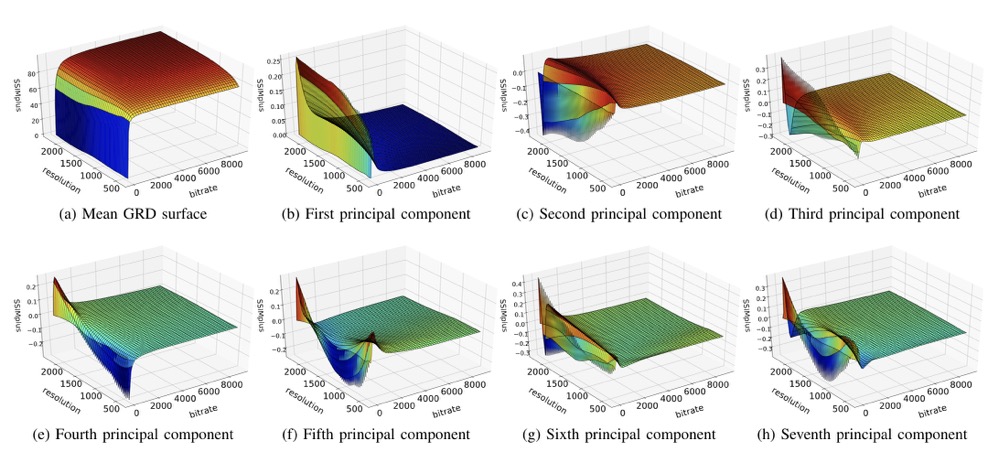Rate-distortion (RD) theory is at the heart of lossy data compression. Here we aim to model the generalized RD (GRD) trade-off between the visual quality of a compressed video and its encoding profiles (e.g. bitrate and spatial resolution). We first define the theoretical functional space W of the GRD function by analyzing its mathematical properties. We show that W is a convex set in a Hilbert space, inspiring a computational model of the GRD function, and a method of estimating model parameters from sparse measurements. To demonstrate the feasibility of our idea, we collect a large-scale database of real-world GRD functions, which turn out to live in a low-dimensional subspace of W. Combining the GRD reconstruction framework and the learned low-dimensional space, we create a low-parameter eigen GRD method to accurately estimate the GRD function of a source video content from only a few queries. Experimental results on the database show that the learned GRD method significantly outperforms state-of-the-art empirical RD estimation methods both in accuracy and efficiency. Last, we demonstrate the promise of the proposed model in video codec comparison.
@article{duanmu2020egrd,
title={Characterizing Generalized Rate-Distortion Performance of Video Coding: An Eigen Analysis Approach},
author={Duanmu, Zhengfang and Liu, Wentao and Li, Zhuoran and Ma, Kede and Wang, Zhou},
journal={IEEE Transactions on Image Processing},
volume={29},
number={},
pages={6180-6193},
year={2020}
}
| Algorithm | Reference |
|---|---|
| Reciprocal | Toni et al. Optimal selection of adaptive streaming representations. TOMMCAP. 2015 |
| Logarithmic | Chen et al. A subjective study forthe design of multi-resolution ABR video streams with the VP9 codec. EI. 2016. |
| pGRD | 2D polynomial basis |
| tGRD | 2D trigonometic basis |



